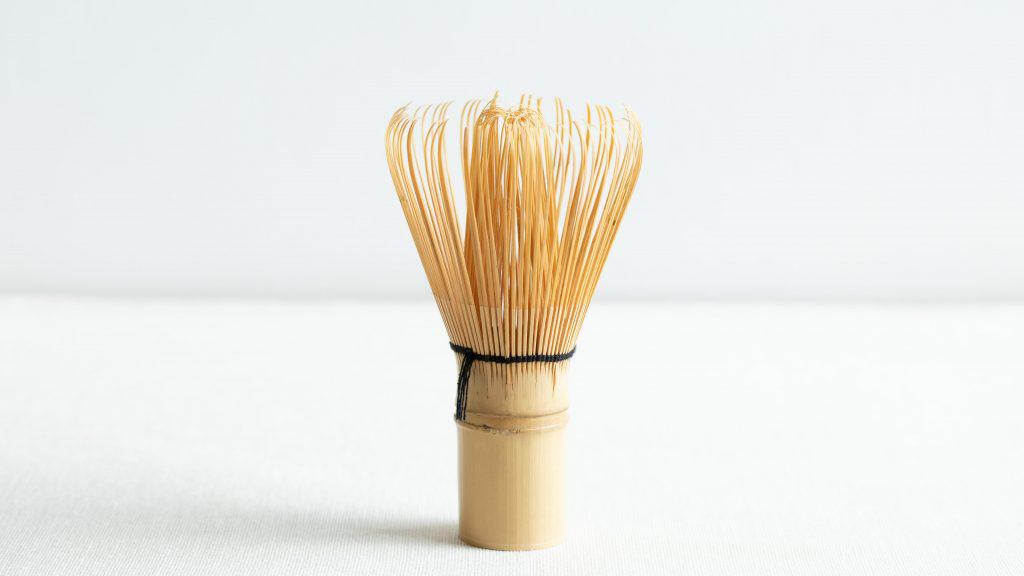
A guide on how to care for bamboo matcha whisk properly
While there are several factors that can affect the taste of your matcha tea, the condition of your matcha bamboo whisk or chasen also plays an important role. A broken or a thinning matcha whisk prong may not be able to blend or remove the clumps in your matcha smoothly. As the matcha bamboo whisk is made from a natural material, it is also susceptible to deterioration. So how long exactly before we have to get our matcha bamboo whisk replaced?
We came across various sources that claimed that a handcrafted matcha bamboo whisk can only be used up to 10 uses. However, this may not be a workable approach for most of us who just want to enjoy our matcha tea on the daily. In our experience, a matcha tea bamboo whisk can last up to about 2 years if maintained properly. To help you prolong the longevity of your bamboo bamboo whisk, here’s our guide on how to care for matcha bamboo whisk properly from using to cleaning and storing it.
WHAT IS A MATCHA WHISK?
A matcha whisk, also known as chasen has always been an important component of matcha tea preparation, especially in Japanese tea ceremonies. The traditional matcha tool is specially crafted with dozens of bamboo prongs that easily yields a smooth and frothy matcha. The rich frothy layer helps to mellow the bitterness of the matcha, bringing its delicate nuances to light which is what makes a delicious cup of matcha tea.

In Japan, matcha whisks are handmade meticulously from a single piece of bamboo and they come in various shapes and string counts that can range from 16 to 120 tines. The curved ends and bouncy spring of the whisk is what makes the matcha whisk the easiest tool to whisk matcha powder and water together.
HOW IS THE JAPANESE MATCHA WHISK MADE?
This video shows you what goes into the making of a Japanese bamboo whisk. First, the top half of the bamboo shoot is peeled and softened before carefully sectioned into 12 to 24 splines with a steel knife. The maker will then remove the bamboo’s inner flesh and then carefully split each spline into smaller tines. The insides of the bristles are then further scraped thin and curled. Finally, it’s bound with threads and then perfected into shape.
All these steps are performed with very simple tools by a skilled craftsman, which makes the traditionally made bamboo whisk quite expensive.

Our bamboo whisks are made in China by a reputable manufacturer which is of good quality, not too expensive and best suited for your learning journey. Once you have gained experience and confidence, then you can consider purchasing one of these traditional made in Japan bamboo whisks to further your interest and support the craft.
We’ve been experimenting with matcha for the longest time and even tried different workarounds to make matcha tea without a bamboo whisk. In our experience, no other tool can create the best froth for matcha tea like the bamboo whisk.
HOW TO PREPARE TEA WITHOUT THE BAMBOO WHISK?
If you can’t get your hands on a bamboo whisk, you can try using a battery operated frother. However, we found that this can get quite messy sometimes as the frother sprays droplets of milk and matcha everywhere if you are not careful.

Our favorite bamboo whisk alternative is to mix the matcha powder and water in a capped bottle and shake it vigorously for 30-60 seconds until all clumps are dissolved. This bottle method works great when making non-traditional matcha beverages like our cold brew matcha or matcha shot. If you’re making a traditional Japanese tea in the form of koicha(thick tea), it will not work as it is of a thicker consistency.
HOW TO CLEAN MATCHA WHISK BEFORE USE
Once you’ve received your new bamboo whisk, we recommend cleaning it before use by soaking it in a chawan bowl (or any bowl) of hot water for about 2 minutes. You might notice that the tines at the core of the bamboo whisk loosen and unfolds a little – this is normal. This will only aid you better in achieving a perfectly blended matcha with a rich layer of foam.
It is also a good practice to soak your bamboo whisk in warm water for a few minutes before every usage as it helps to soften up the bristles and also improve the elasticity of the bamboo whisk.

HOW TO USE THE BAMBOO WHISK PROPERLY
When you’re whisking your matcha tea with the bamboo whisk, always move in a soft yet quick W- or M-shaped motions and avoid touching the bottom of your chawan bowl. You do not want to be hitting or scraping your bamboo whisk against the bowl as this will break the bristles of your bamboo whisk easily. Always whisk your matcha with your bamboo whisk slightly suspended in the liquid.

A great tip to ease your whisking effort is to always put the matcha powder in the bowl first before adding water as this will naturally kick off the mixing of water and matcha powder.
HOW TO WASH A BAMBOO WHISK PROPERLY
Once you’re done whisking your matcha tea, soak your bamboo whisk in clean warm water again for a few seconds and rinse it a little to ensure that there are no matcha residue on the bamboo whisk. If not cleaned properly, your bamboo whisk can develop molds which will obviously shorten the longevity of the bamboo whisk.
Another important note is to never use soap or clean your bamboo whisk using the dishwasher as this will easily damage the bamboo whisk.
HOW TO DRY AND STORE THE BAMBOO WHISK PROPERLY
After cleaning the bamboo whisk, it should be dried quickly and properly. The best way to dry your bamboo whisk is to put it on the bamboo whisk holder as this will help to maintain its original shape. If you do not own a matcha whisk holder, you can leave the bamboo whisk to dry on its handle, although this may not be ideal as the excess water may collect in the handle and lead to the development of molds.

You can store your bamboo whisk as you dried it on the bamboo whisk holder and this helps maintain its shape and prevent the prongs from breaking. Hence, we strongly recommend that you get a bamboo whisk holder to prolong the lifespan of your bamboo whisk. Never store your bamboo whisk back into its original plastic packaging. Doing so will force it into its initial shape.
During the winter months, we recommend patting the damp bamboo whisk with a cloth before leaving it to dry. This will help dry the bamboo whisk a little faster. Once it’s properly dried, store it in a cool, dry place to prevent molds from growing.
If dampness is not something you can avoid, here’s another solution. Soak the bamboo whisk in a non-toxic food citric acid solution like vinegar for a few seconds, before pat-drying it with a clean cloth and then leaving it to dry.
PROPER CARE FOR A BAMBOO WHISK GOES A LONG WAY
With all the above steps taken to properly care for your bamboo whisk, you will be able to enjoy using your bamboo whisk without losing its effectiveness of whisking for about one or two years long. If your bamboo whisk prong begins to thin or break, that is when it’s time to purchase a new one!
